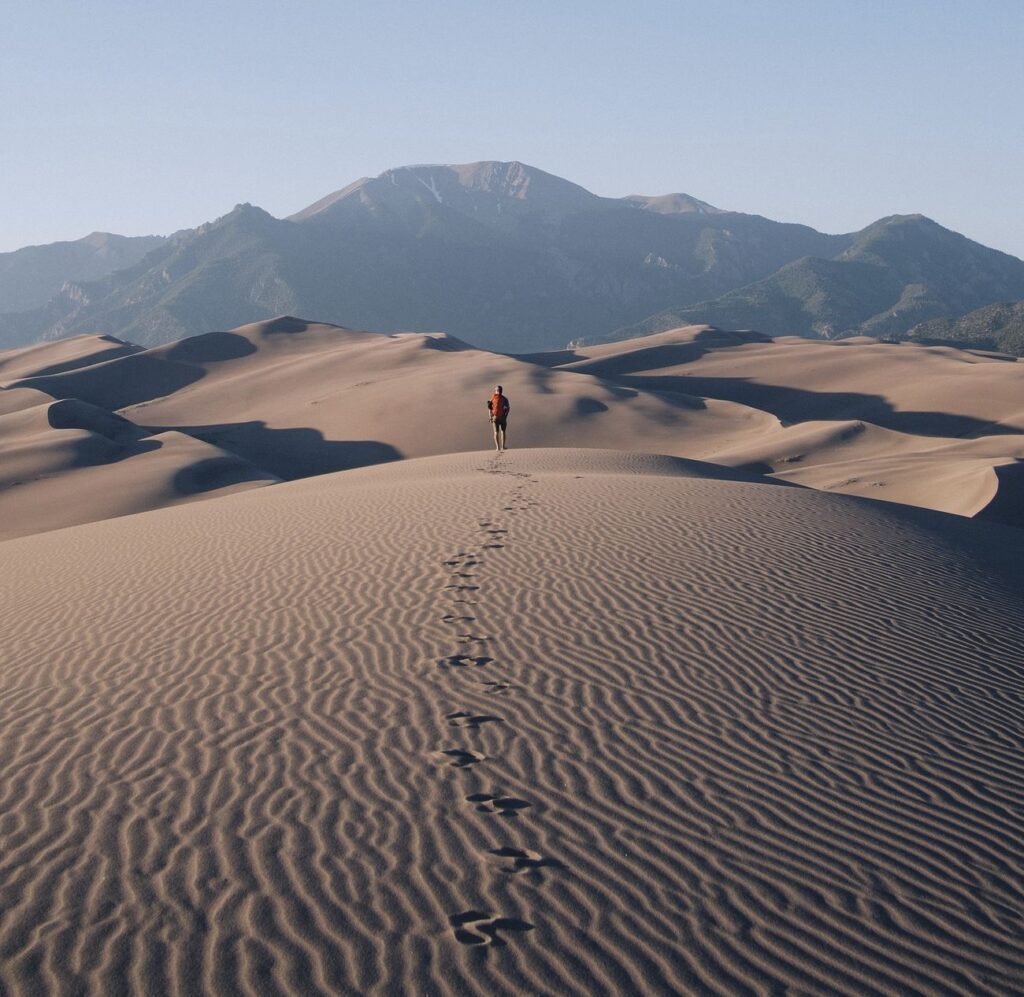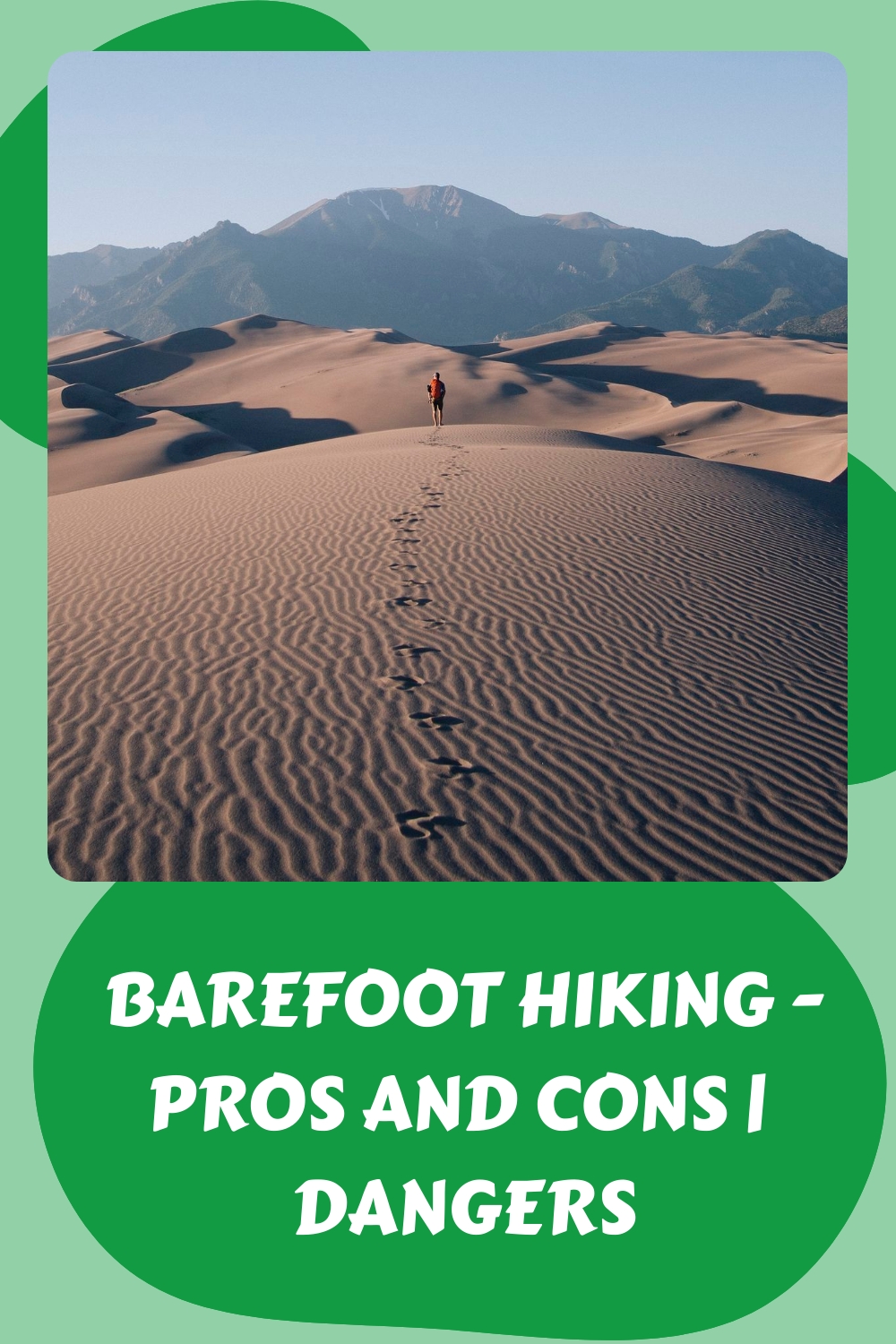Barefoot Hikers
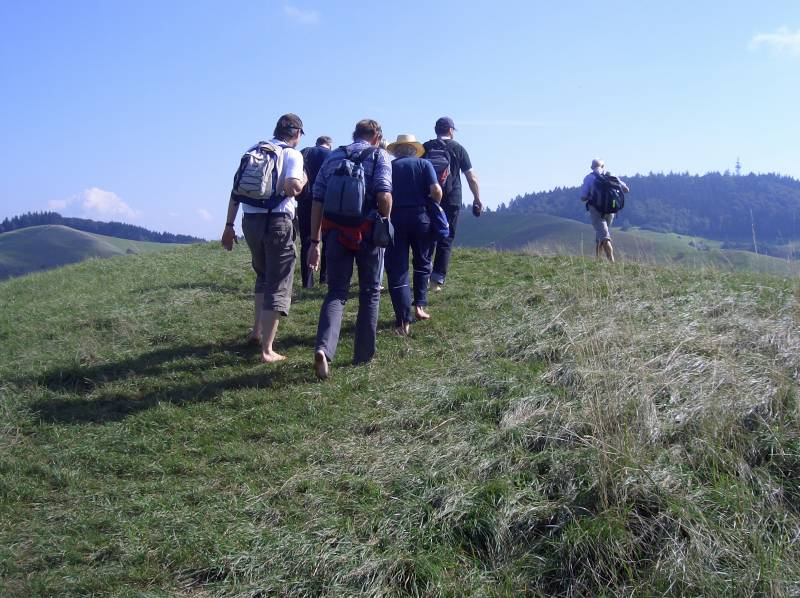
“Barefoot hiking on the Badberg Trail in the Kaiserstuhl, Germany”, Lorenz kerscher, (CC BY-SA 3.0)
Are you an adventurous hiker? Would you like to try something unique and daring during your next excursion on the trail?
If so, why not consider taking a walk in nature…without any shoes! Barefoot hiking has been gaining in popularity recently as more people realize the physical and mental health benefits that come from feeling closer to the Earth with nothing between their feet and its many textures.
In this post, we’ll discuss the pros, cons, and potential dangers of barefoot hiking – giving you all of the information that you need to make an informed decision about whether or not it’s right for you.
So let’s lace up our sneakers (or perhaps unlace them!), grab a water bottle, and hit the trail; it just might be better than ever without those restrictive shoes slowing us down!
Barefoot Hiking Reduces Soil Erosion
Wait, what?
Yes, you read that right! Barefoot hiking is good for the environment. How? Well, it turns out that when we wear shoes with thick soles and hard treads, our feet create more pressure on the ground than going barefoot.
This increased traction leads to soil erosion in areas where foot traffic is heavy.
That’s why going without shoes is better for the outdoors. Studies have shown that barefoot hikers cause less damage to trails than their shod counterparts.
So, next time you head out on a hike, consider leaving your shoes behind! Not only can it help preserve nature and prevent erosion, but it also feels freeing and liberating.
Bare Feet
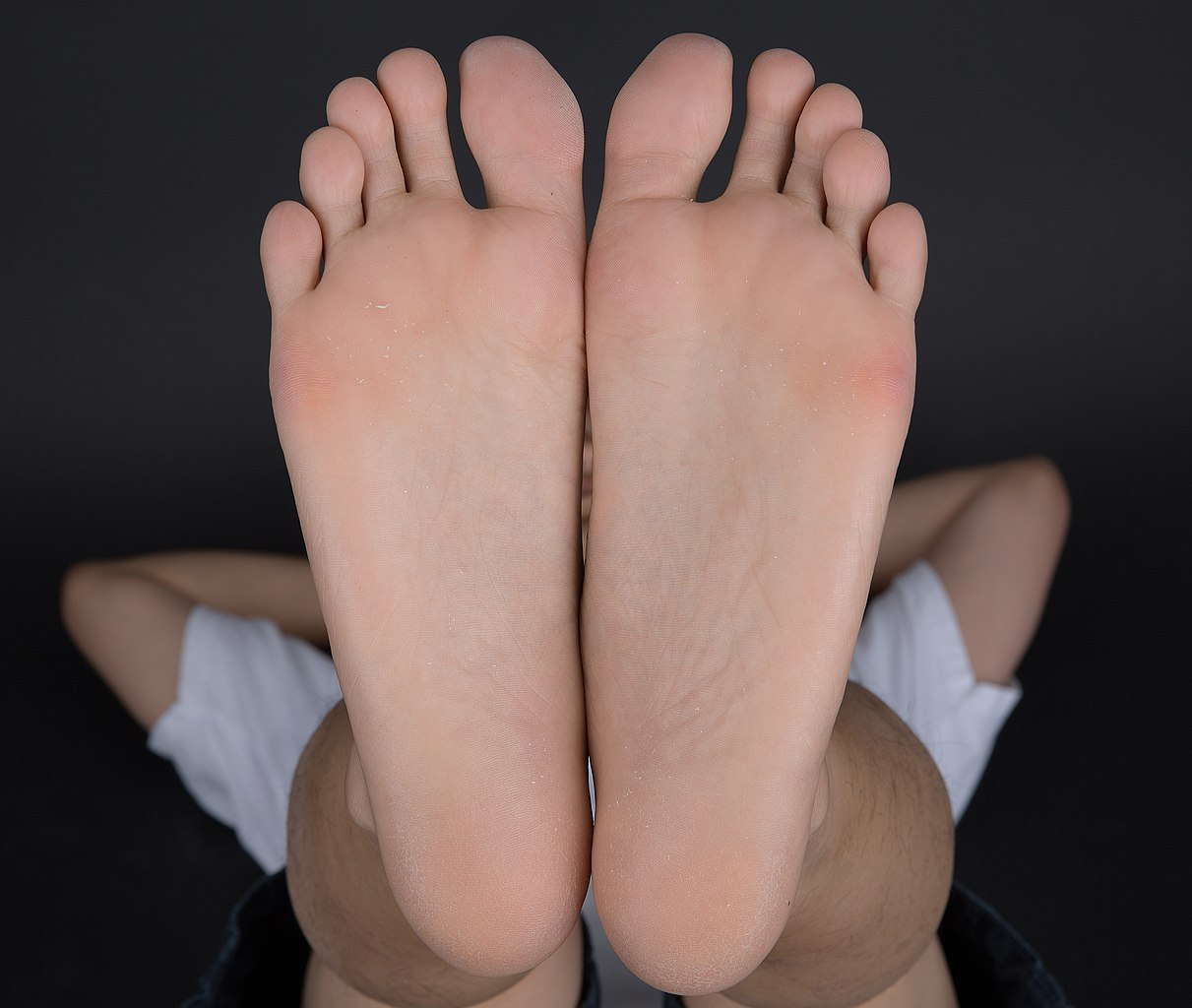
“Soles of a human”, Alvinjiaodi, (CC BY-SA 4.0)
The human foot is made up of 26 bones, 33 joints, and over 100 muscles, tendons, and ligaments. It’s also covered in thousands of nerve endings that can detect everything from temperature to texture.
So when you go barefoot, these nerve endings are working hard to send messages to your brain about the environment around you. Plus, by having direct contact with the ground, you can also gain a better sense of stability and balance that isn’t possible with shoes on.
Hiking Barefoot | Pro: Healthy Strong Feet

“Healthy feet of an 11-year-old girl who regularly goes barefoot”, Lorenz kerscher, (CC BY-SA 3.0)
You may strengthen your lower legs and feet by going barefoot. When you don’t have shoes on, you must rely on the power of your muscles and ligaments to absorb shock, adapt, and balance on uneven terrain.
This aids in strengthening the numerous foot muscles that receive little activity when we wear shoes.
Going barefoot helps strengthen your feet and enhance your stability and balance in general.
This is because adjusting to shifting surfaces makes your body use more muscles and connective fibres to maintain balance. Because of this, walking barefoot is a wonderful way to improve balance, agility, and coordination.
Why Do People Barefoot Hike?
Many hikers like to hike barefoot for the mere joy of experiencing a closer connection to nature. Nothing compares to the sensation of sand, grass, and earth under your feet. It can be immensely healing to do that!
Also, hiking barefoot can help you appreciate the beauty of the outdoors. You can appreciate your environment’ views, sounds, and textures when you’re not restricted by heavy shoes or boots.
So why not try barefoot hiking if you’re seeking for a method to strengthen your relationship with nature? It may turn out to be the ideal method to explore the outdoors.
Long Distance Hiking in Barefoot Shoes vs Shorter Day Hikes

“Foot fetish; feet; barefoot”, Pure male feet, (CC0 1.0)
Long-distance walks and shorter day hikes are the two main varieties of barefoot hiking. Long-distance hikes can range in length from weeklong treks to multi-day backpacking excursions. On the other side, day hikes are usually shorter, no-camping excursions that last a few hours or less.
It’s crucial to wear shoes with enough cushioning and traction for long-distance hikes. This is because you want minimalist footwear to protect your feet from strain and injury as they will be subjected to a lot of stress for extended periods of time.
Going barefoot can, nevertheless, be a terrific way to connect with nature on shorter day treks. Since you won’t be wearing any, you won’t have to worry about getting the ideal pair or breaking them in. Gives You An Edge When You Hike Along Muddy Or Slippery Trail.
What Do You Need To Do If You Will Try Barefoot Hiking For The First Time?

“Barfußlaufen in der Natur”, Lorenz Kerscher, (CC BY-SA 3.0 DE)
There are several crucial preparations you should take if you’re planning to try barefoot hiking for the first time to ensure a secure and enjoyable experience.
Do your homework and familiarize yourself with the terrain you’ll be trekking on.
First don’t walk on surfaces where there are sharp rocks, roots, or other impediments that could cut your foot.
Second, if further protection is required, it’s a good idea to wear thin socks. Wearing socks can help protect your feet from harm if it’s cold outside or if you think there may be sharp items on the ground.
Third, make sure you listen to your body and take regular rests. Make careful you don’t overdo it because wearing shoes will need less work than going barefoot long distance hiking.
Finally, keep an eye on the weather and be ready for unforeseen temperature fluctuations or other environmental occurrences. Make sure you have a pair of shoes with enough cushioning and traction for longer hikes when it’s essential.
While going barefoot for the first time, secure and delightful experience by following these instructions! Take good care of your feet.
The Opportunity To Strengthen Your Muscles
Hiking barefoot gives you the opportunity to strengthen your feet and lower legs, which is one of the many advantages.
Your muscles are always working when you hike without shoes because they are absorbing shock and keeping you balanced. They get more strength as a result, which also benefits posture, coordination, and agility.
By supporting your feet and ankles, these muscles can also aid in reducing discomfort and exhaustion during hikes. Also, as you gain more barefoot hiking expertise, you’ll learn how to make the most of the terrain and any impediments.Wet feet dry much more quickly than wet shoes
Pay attention to the way you walk
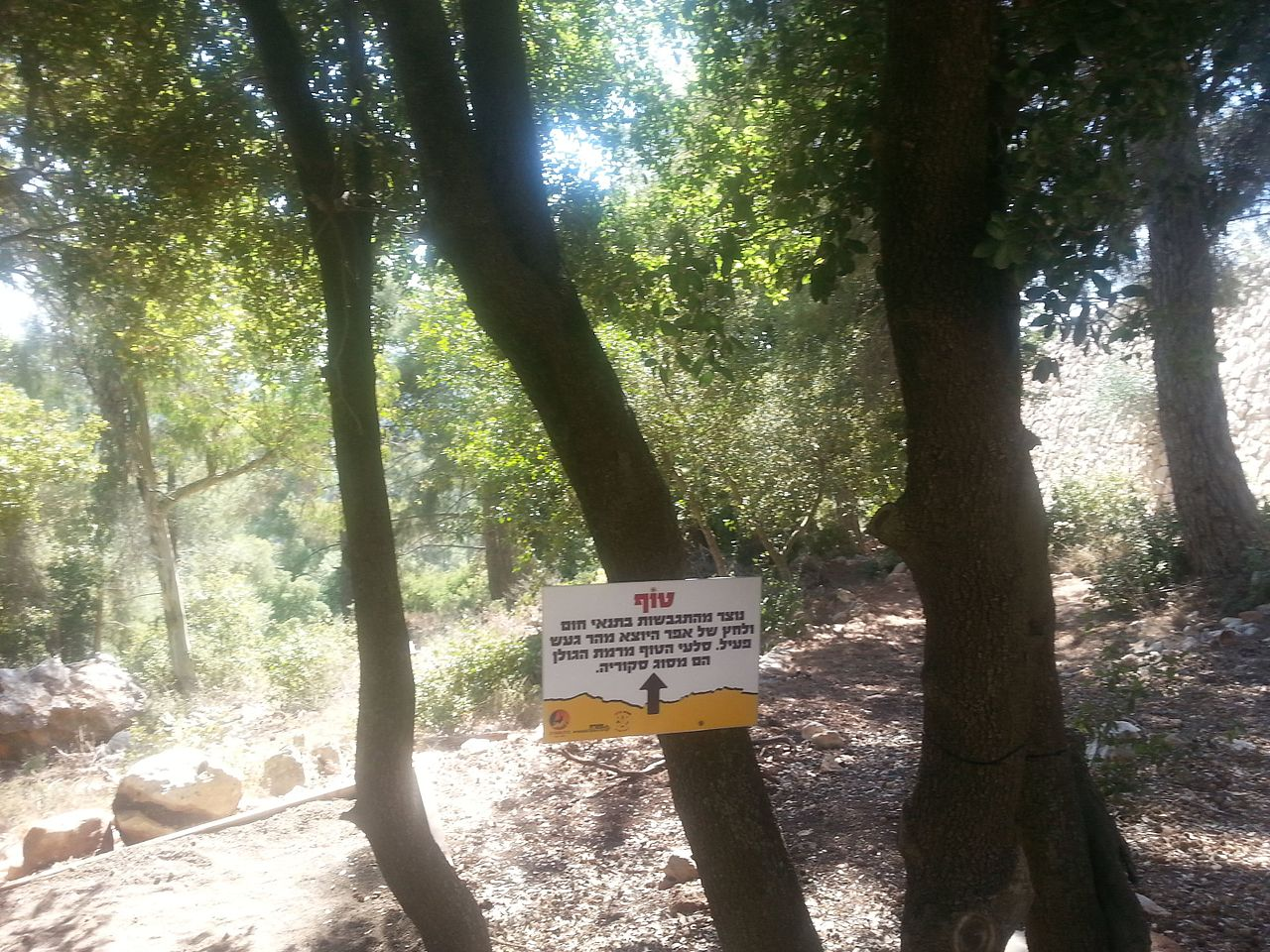
“Barefoot path on Manara Cliff”, Vcohen, (CC BY-SA 4.0)
It’s crucial to watch your gait when hiking with bare feet. This is because you want to protect your feet from strain and injury as they will be subjected to a lot of stress when hiking barefooted for extended periods of time.
In order to avoid falling, be sure to walk slowly and steadily. Take small, careful steps and try not to overstep. Land on your forefoot or heel first since this will assist you reduce impact on each stride.
Be out for any sharp rocks or other obstructions that could cut your feet as well. Keep the terrain in mind while you walk and adapt your stride.
Barefoot Hiking In Winter
Winter barefoot hiking can be a memorable and satisfying experience. To ensure your comfort and safety, it’s crucial to take additional precautions.
To begin with, be sure your attire is suited for the weather. Put on several layers of thermal clothing that will keep you warm without suffocating you. To further defend against the cold, think about donning thin socks.
Second, remember to listen to your body and take regular rests. It’s crucial to remember that hiking barefoot in the winter requires more work than it does in the summer.
Finally, give the terrain you’re hiking on extra consideration. Keep an eye out for any sharp rocks or roots that could cut your feet because snow and ice can make the terrain slippery.
Hiking Boots
A nice pair of hiking boots can be really helpful. Boots offer your feet the additional defense they need against splinters and sharp pebbles on the route, as well as cushioning and arch support that lessens strain and stiffness.
Also, they assist you climb over slick or muddy terrain with more traction, which can help keep you safe. Hence, even if hiking barefoot might be fun, it’s always a good idea to have a pair of boots on hand just in case!
Hiking in Barefoot Shoes – Pros and Cons
For hikers seeking the advantages of barefoot trekking without losing safety, barefoot shoes are becoming an increasingly common option.
These sneakers have a flexible sole that allows for natural foot movement and flexion while yet providing cushioning and traction. They appear like conventional sneakers. Better balance, higher agility, and improved foot protection are benefits of wearing these kinds of shoes.
Yet unlike hiking boots, they don’t offer the same level of defense against jagged edges or uneven ground. Therefore buying a pair of barefoot shoes can be a wonderful choice if you want to try trekking without shoes but also want some added safety.
Who Makes the Best Waterproof Barefoot Shoes?
Xero Shoes is a great option if you’re looking for the best waterproof barefoot footwear. They give a variety of light, flexible shoe styles that offer sufficient defense against jagged edges and slick surfaces.
Moreover, Xero Shoes have a revolutionary sole technology that permits natural foot motion while delivering exceptional traction in muddy or rainy environments. Hence, Xero Shoes are a good option to consider if you’re seeking for a waterproof barefoot shoe that offers the most protection and comfort.
It takes time to adapt
You may need some time to get used to it, depending on your level of barefoot hiking expertise. Be patient and, if necessary, stop frequently as your feet’s bottoms will need time to adjust to the new surroundings and terrain.
Start small and work your way up if you’re new to barefoot hiking. Begin by strolling around the home or in your backyard and progressively raise the terrain’s difficulty. By doing this, you’ll give your feet a chance to adjust to walking on various surfaces and gain comfort before taking on harder trails.
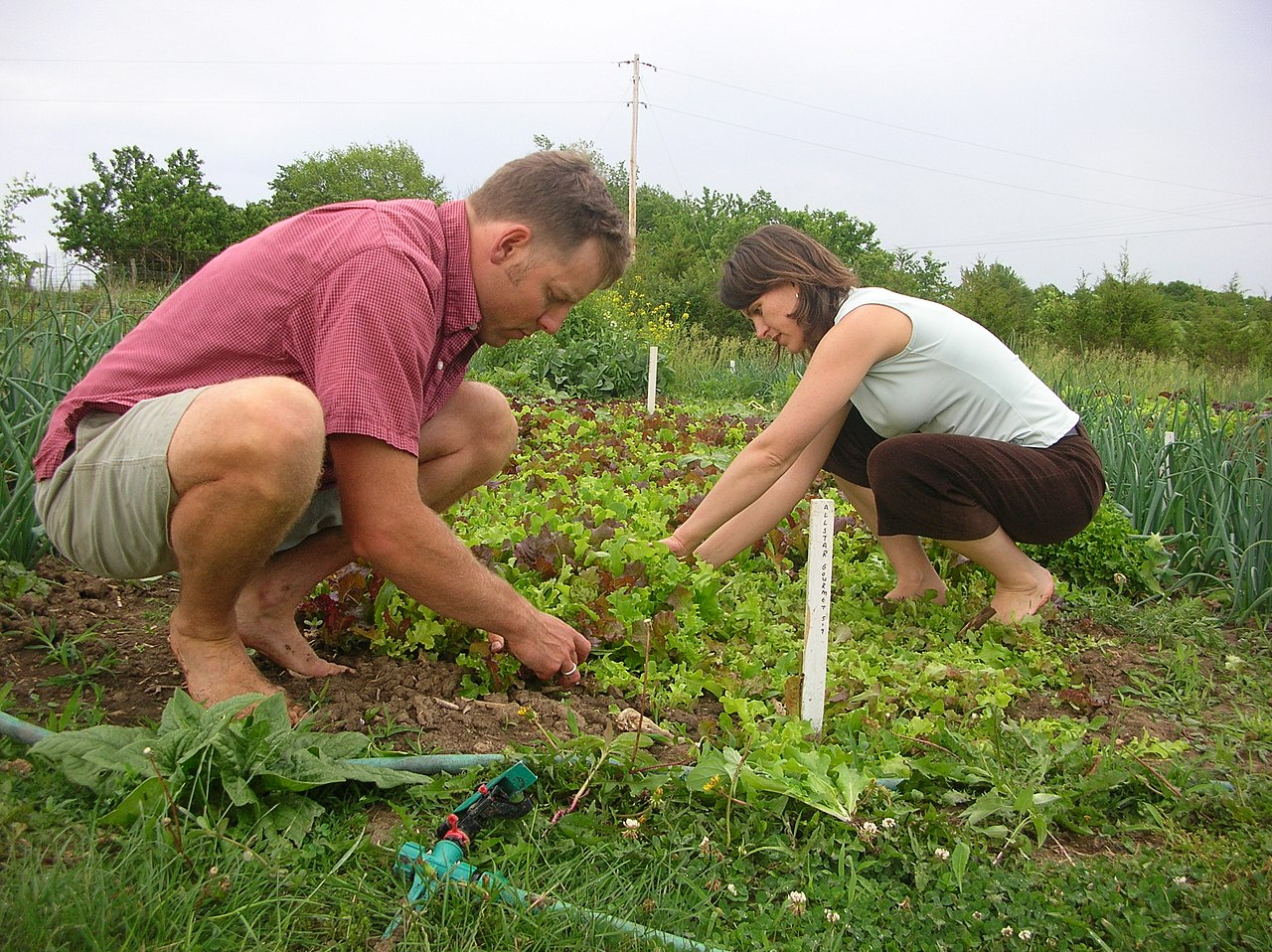
“Barefoot farming”,ecnadniar, (CC BY 2.0)
Don’t expect yourself to be able to hike huge distances immediately; it’s vital to remember that everyone develops differently. Soon you’ll be able to explore the outdoors barefoot if you pay attention to your body and take frequent rests.
The Dangers of Barefoot Hiking
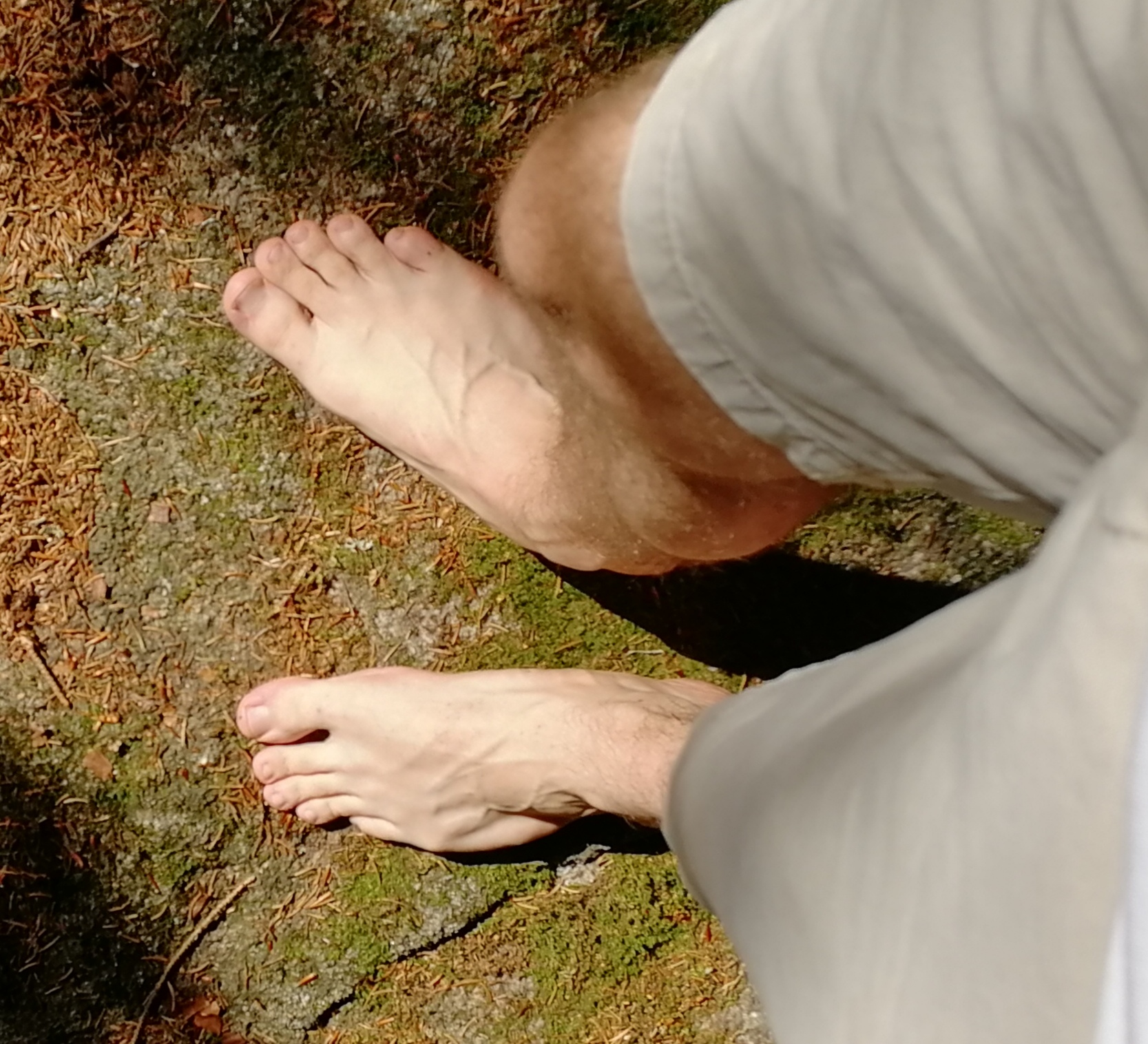
“Barefoot hiking in forest”, Galus24, (CC BY-SA 4.0)
It is also important to avoid hiking in areas with a high chance of encountering ticks or snakes as these creatures could easily make their way onto your unprotected feet. When possible, stick to well-maintained trails and remain vigilant for any potential hazards.
In the end, it’s important to carefully consider your options before going barefoot. Before you take off your shoes, it’s crucial to weigh the risks, even though it could feel like a freeing experience. In light of this, the following advice is provided for safe barefoot hiking:
– Remain on routes and trails that are kept up. Avoid regions with dangerous materials or sharp items.
– If at all possible, avoid walking in contaminated or dirty public areas.
– Before you take a step, look down to make sure there aren’t any sharp pebbles or objects that could cut your feet.
If your feet want further protection, put on some socks.
Saftey Tips for Barefoot Hiking:
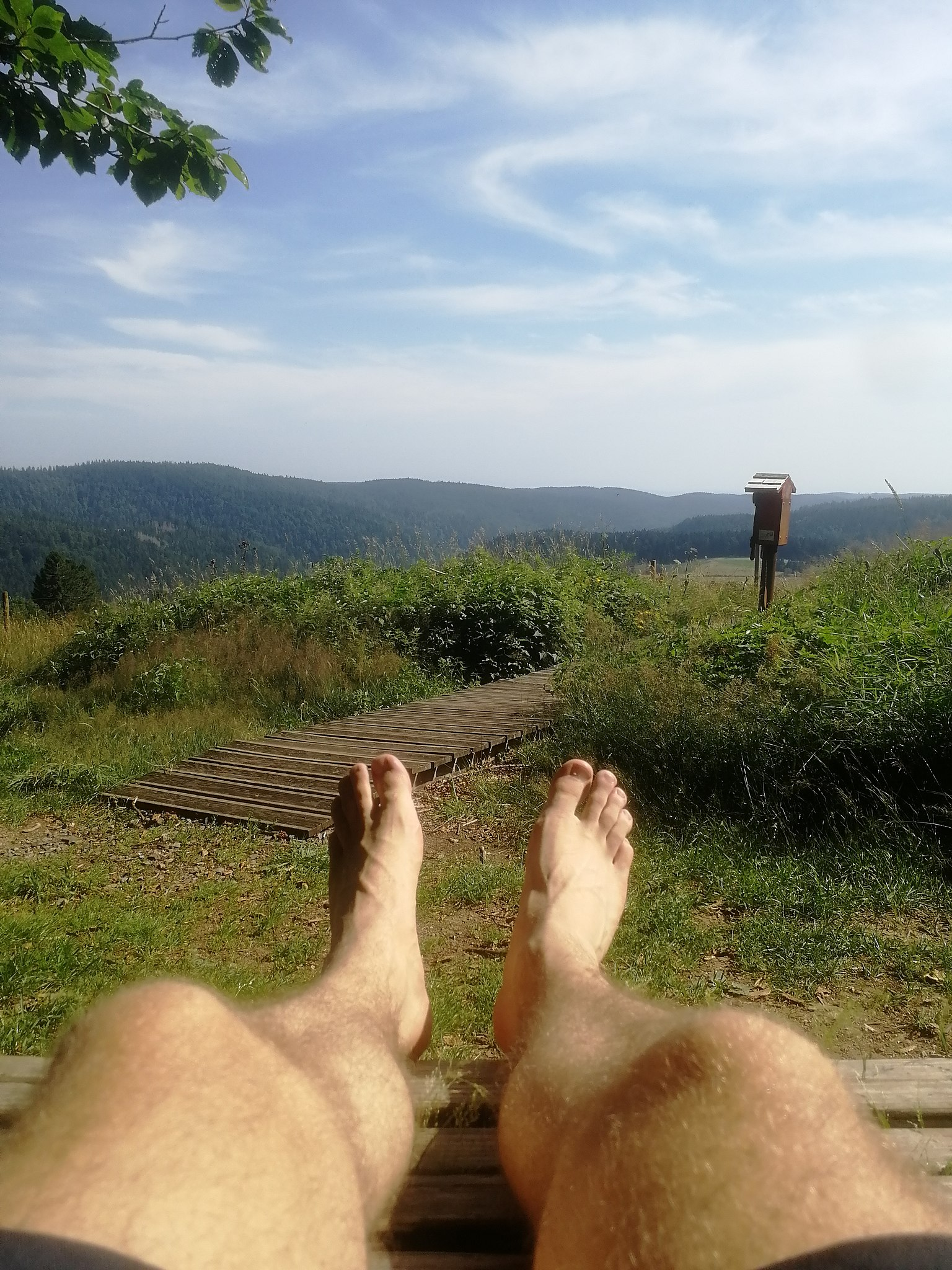
“Barefoot relaxing in the mountains”, Galus24, (CC BY-SA 4.0)1. Pay attention to the terrain.
Make sure you’re aware of what kind of ground you’re walking on and avoid any areas with sharp rocks, roots, or other obstacles that could hurt your feet.
2. Wear socks if necessary.
If it’s cold outside or sharp objects are abundant on the ground, it’s a good idea to wear thin socks for some extra protection.
3. Wear shoes when necessary.
If you’re planning a long-distance hike, it’s important to wear shoes with adequate cushioning and traction.
4. Take breaks often.
Listen to your body and know when it’s time to rest.
5. Be aware of the weather.
Pay attention to the temperature and make sure you’re prepared for sudden changes in weather conditions.
Barefoot hiking can be a wonderful way to reconnect with nature and strengthen your feet at the same time. With some preparation and safety precautions, you can enjoy the great outdoors without worrying about your feet.
Barefoot End
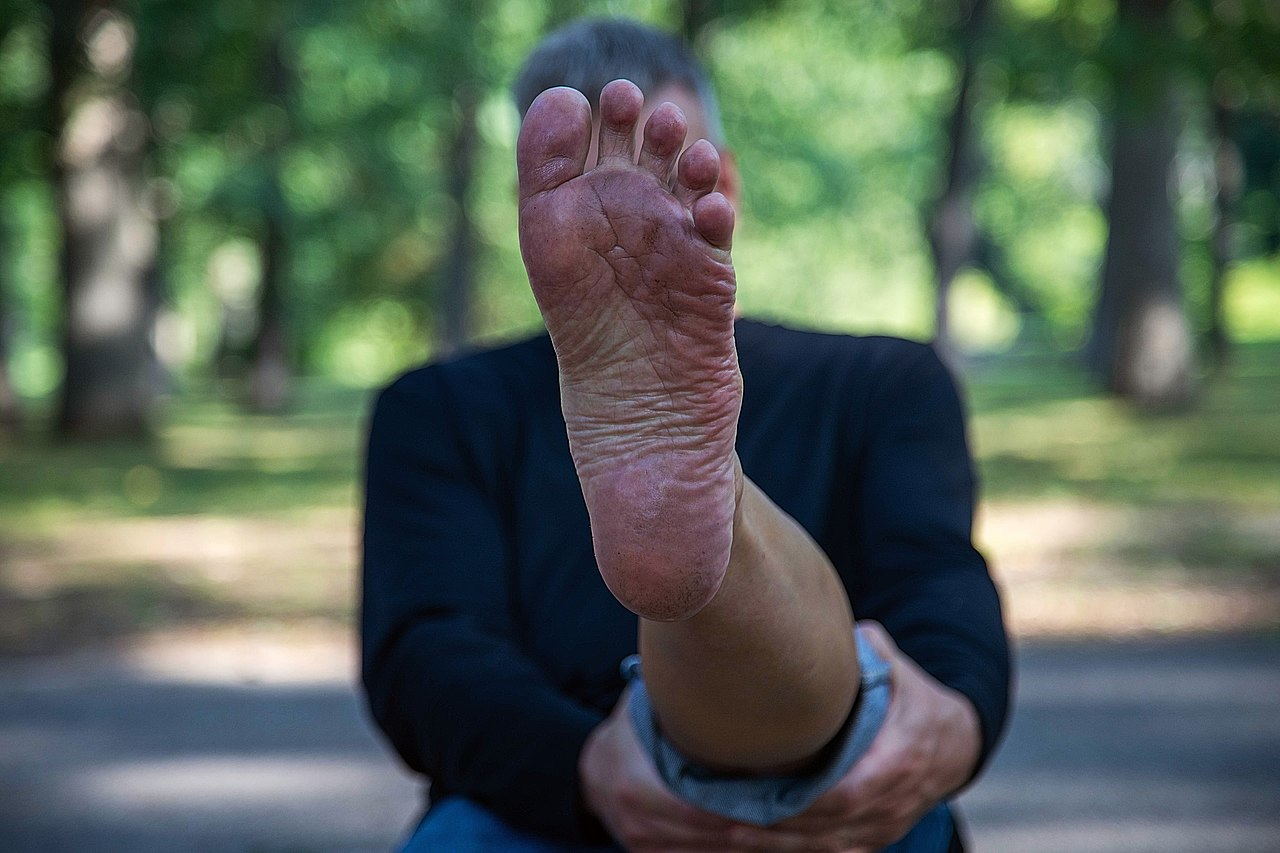
“barefoot”, Pure male feet, (CC BY-SA 4.0)
In summary, barefoot hiking can be both beneficial and dangerous depending on your environment and how well you know the terrain. While it can provide therapeutic relief to your feet, without proper caution it could lead to cuts, bruises, or other serious injuries.
All in all though, if done correctly, barefoot hiking can open us up to a whole new world of exploration and discovery – one that truly immerses us in nature from the ground up!
As The Dalai Lama said: “A good measure of your success in life is the degree to which you feel deeply connected to others.”
Just remember – safety first! Who knows what kinds of wondrous creature comforts you may find by taking off your shoes.
Read more articles here.
Generated with Pin Generator
